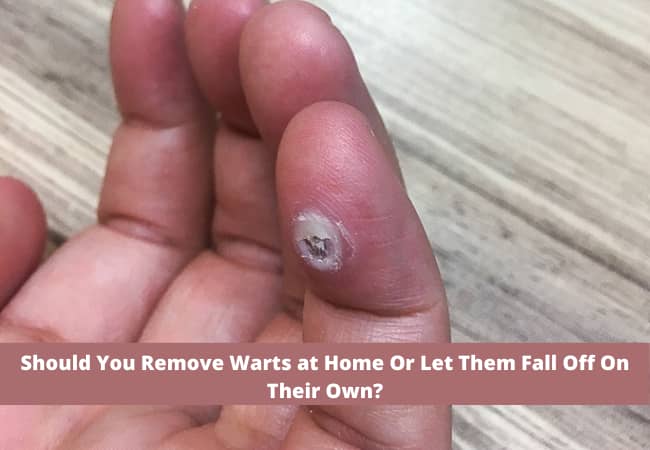 Verified By Dr AISHWARYA MALLADI November 9, 2023
Verified By Dr AISHWARYA MALLADI November 9, 2023

You might have experienced a skin growth on your fingers, hands, beneath the feet, or on other parts of your body. These growths are warts. Warts are raised bumps on your skin caused by the human papillomavirus (HPV].
Warts often grow on hands and feet; however, they can develop anywhere on the skin. They are harmless but can be embarrassing, depending on the area where they have grown. Warts are extremely contagious and can spread through direct skin contact or common towels and razors. For instance, if you have a wart, then it can spread if you touch it and then touch other parts of your body. Similarly, it could spread if you and someone else use the same towel.
Human papillomavirus (HPV) causes warts on the skin. HPV is a large family of viruses that trigger cellular growth. This extracellular growth makes the skin hard. Most cases of warts are usually caused by the spread of the virus through physical contact or through sharing objects with an infected person. The objects can be towels, glasses, clothes, etc.
Warts can also spread through sexual contact. However, it should be noted that not everyone who comes in contact with the virus will develop warts. Each individual’s immune system has a different response to the virus. Depending on the immune system’s capabilities, some individuals might not develop them even after coming in contact with the virus.
Depending on factors, such as the specific HPV that causes it, and the part of the body where they have grown, there are several types of warts. Here are some of them:
As the name suggests, these are the most common type of warts. Their size can range from that of a pinhead to a pea. Common warts usually grow on hands and feet, especially on the skin surrounding the nails. Small and black colored dot-like structures, which are basically blood clots, often accompany common warts.
These warts grow on the soles of the feet. Unlike other warts, plantar warts grow into your skin, not out of it. You can tell if you have a plantar wart if you notice what appears to be a small hole in the bottom of your foot that is surrounded by hardened skin.
Flat warts are smaller in comparison to other warts. They are smoother as well. However, the issue with flat warts is that they often grow in groups, usually varying from 20 to 100.
These are similar to spikes. Filiform warts do not hurt, but they can be irritating as they grow around the sensitive areas of your face, such as the mouth and nose. Also, they grow much faster than other types of warts.
As the name suggests, these warts grow around your genital area. Usually, they spread through unprotected sex. Genital warts can either grow singularly or in a group. These warts can be extremely irritating.
Although there are several types of warts, some of the symptoms are common across all of them, they are:
Everyone is susceptible to warts, however, a few body conditions and behavioral habits can make you more vulnerable. Here are some of the common risk factors of warts:
Not every type of wart causes complications, as they usually fall off on their own without any issues. However, in certain cases, HPV infections can lead to cervical cancer, genital cancer, and other forms of the disease. The high-risk strains, HPV 16 and HPV 18 are known to cause 70% of cervical cancer cases.
Warts often go or fall off on their own. It is, therefore, best to let your body’s immune system fight it. However, they are irritating and uncomfortable; hence, you might want to try wart removal at your home. The only thing that should impact your decision is whether you can manage their growth. If the warts are not growing, you can let them go on their own. Otherwise, you can try wart removal at home.
Here are some of the home remedies that you can try for wart removal:
Salicylic acids are great for wart removals. You can get them from a nearby pharmacy in the form of an ointment, pad, or liquid. Apply the product on the wart to remove the dead skin cells around it. This will halt the growth of the wart and eventually remove it completely. It is advised to soak your wart in warm water before applying the product for better results.
Freezing is usually done with the help of nitrogen products. You can easily get a liquid or spray form of nitrogen products. Nitrogen freezes the dead skin cells and makes it easier to get rid of it. You should not use freezing techniques for wart removal for small children, as the process can be painful at times.
Some individuals have had success in treating warts with duct tape. The process includes covering a wart with a small piece of duct tape for some days, then soaking wart, and then, rubbing the wart to remove the dead skin finally. This method can take many rounds of treatments to work.
While you can easily remove warts at home, it is advisable to see a doctor. Warts are usually harmless, and our body’s immune system can fight against HPV independently. Therefore, it is possible that you might not want to treat warts. However, they can be painful at times. Hence, you might want to see a doctor depending on the pain, area of infection, or the wart’s growth rate. Some of the signs when you certainly should visit a doctor are:
You can book an appointment with Apollo Hospitals or visit any of its branches to see a doctor for wart removal.
Call 1860-500-1066 to book an appointment
Depending on the growth and the type, your doctor can use any of the following procedures for wart removal:
Your doctor will first try salicylic acid for wart removal. If salicylic acid does not work, the second option will be to use trichloroacetic acid. These acids first control the growth of warts and then start removing the dead skin. Using acids for wart removal can be more effective with the cryotherapy procedure.
Your doctor will start by applying liquid nitrogen on and around the wart to freeze it. This will form a blister around the wart, causing your skin to let go of dead cells.
If you want a quick wart removal, surgery is the way to go. After numbing the wart area, your doctor can cut and remove the wart in several ways. For instance, doctors can use electrosurgery to burn the infected skin tissues or use a sharp knife to cut the wart.
Doctors can use lasers to burn the wart and then remove it.
It is a substance that forms blisters around the wart. The blister lifts the wart and removes it.
Your doctor can use injections to put medicine into the wart. Drugs such as bleomycin can stop the growth of a wart. Similarly, another drug called interferon can boost your immune system. This can help your body to fight better against HPV.
You cannot completely prevent warts. However, you can reduce your chances of getting or spreading them by the following means:
Warts are usually harmless and won’t severely affect your health. They even usually disappear on their own. However, people who develop them might feel embarrassed about the condition. It is advisable to see how the condition develops over a couple of weeks. If warts don’t disappear, or, in fact, grow in number, you should consult a medical professional.
Warts can last anywhere between a few months to a couple of years if left untreated to disappear naturally. About 25%of warts disappear within three to six months. However, 65% of warts may even take up to two years to disappear. However, the condition may vary in different cases.
HPV is a huge family of viruses. Only some of them cause warts, while others are harmless. About 60 of the 100 types of HPVs cause warts on hands and legs. The remaining forty can cause warts in the genital region such as the penis, vagina, and anus during sexual contact.
Having a wart, and its spread largely depends on how well your body’s immune system responds to the virus. Hence, not everyone infected with HPVs may develop warts .
MBBS, MD (Dermatology), Venereology & Leprology, Consultant Dermatologist, Apollo Hospitals, Health City, Visakhapatnam
